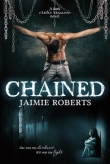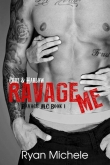
Текст книги "Bones Never Lie"
Автор книги: Kathy Reichs
сообщить о нарушении
Текущая страница: 2 (всего у книги 21 страниц)
CHAPTER 2
THE REPORT WAS short, printed in both French and English.
Struggling to make sense of it, I reread the closing paragraph. In both languages.
A match was obtained on DNA sample 7426 to Canadian national number 64899, identified as Anique Pomerleau, W/F, DOB: 12/10/75. The subject is currently not in custody.
Anique Pomerleau.
My eyes rose to Rodas. His were still fixed on me. “You can imagine how amped I was. Years of nothing, then I get word they’ve sequenced DNA that isn’t Nellie’s. I told the analyst to shoot the profile through CODIS.”
Like VICAP, the Combined DNA Index System is a database maintained by the FBI. CODIS stores DNA profiles and uses two indexes to generate investigative leads.
The convicted offender index contains profiles of individuals convicted of crimes ranging from misdemeanors to sexual assault and murder. The forensic index contains profiles obtained from crime scene evidence, such as semen, saliva, or blood. When a detective or analyst enters an unknown profile, the CODIS software electronically searches both indexes for a potential match.
A match within the forensic index links crimes to one another, possibly identifying serial offenders. Based on a “forensic hit,” police in multiple jurisdictions can coordinate their investigations and share leads. A match between the forensic index and the convicted offender index provides investigators with an “offender hit.” A suspect. A name.
Anique Pomerleau.
“She’s not American.” Lame, but that’s what I said. What I meant was, how did Rodas get a match to a Canadian citizen? Our neighbors above the forty-ninth use the CODIS software but maintain their own national repository of DNA data.
“We came up blank in the U.S., so I decided to send the profile north. It’s not uncommon. Hardwick is less than an hour’s drive from the border.” Rodas pointed at the report I was holding. “That’s from the Canadian National DNA Data Bank.”
I knew that. In the course of my work at the Laboratoire de sciences judiciaires et de médicine legale in Montreal, I’d seen dozens of these reports. The pseudoephedrine and oxymetazoline I’d taken for my cold were short-circuiting my ability to articulate clearly. “How did you make the connection to me?” I clarified.
“The hit was in Canada, so it seemed logical to start there. I have a buddy at the Royal Canadian Mounted Police. He ran the name and found an Anique Pomerleau who fit the identifiers. Pomerleau is wanted by the Sûreté du Québec on a warrant dating to 2004.”
“Hold on. You’re saying that five years after the Canadians are looking for this chick, she leaves DNA on a dead kid in Vermont?” Tinker, king of compassion.
“The lead detective still works there, but apparently, he went AWOL recently.” Rodas gave a wry smile. “I got the feeling that was a story in itself.”
I felt a soft pulsing in my wrist. Stared at the delicate blue vein worming under my skin.
“No one remembered much about the perp or the case. But a coroner hooked me up with a pathologist who’s been around forever. Pierre LaManche.
“LaManche told me Pomerleau was a suspect in the deaths of several young girls. Said her accomplice was a guy named Neal Wesley Catts. Back in ’04, Catts either shot himself or Pomerleau killed him. Then she vanished.
“I told LaManche about the DNA found on Nellie Gower’s hand and about the VICAP match to your unsolved here in Charlotte. He advised me to contact Dr. Brennan.”
Anique Pomerleau.
The monster.
The only one who ever got away.
I kept my face blank. My eyes focused on the vessel snaking my flesh.
“You’re thinking Pomerleau did both Gower and the Nance kid.” Tinker, again stating the obvious.
“I think it’s a possibility.”
“Where’s she been all this time?”
“We sent out a BOLO.” Be on the lookout. “So did the SQ, though I didn’t feel a lot of love there. Can’t really blame them. It’s been ten years. Pomerleau’s maybe dead, maybe using an alias, and the only pic they have dates to 1989.”
I remembered. It was the only photo we had. Taken when Pomerleau was around fifteen.
“So. After Montreal, Pomerleau goes to ground for three years, then resurfaces and grabs a kid in Vermont.” From his tone, I knew Slidell was rolling the theory past his own ears.
“Last I checked, North Carolina’s a few miles from the tundra,” Tinker said. “How’d Pomerleau end up here?” When no one responded, he pressed on. “DNA links this Pomerleau to the Gower kid. But what links Gower to Nance? I said it before, and I’ll say it again. It’s sad, but kids are murdered every day. What makes you so sure we’re looking at one doer?”
The pressure in my sinuses suddenly felt explosive. Discreetly, I pressed a hand to one cheek. My skin was fiery hot. Was the virus upping the ante? Or was it the shock of what I was hearing?
As I reached for a tissue to blow my nose, Rodas ticked off points, beginning with his right thumb. “Both victims were female. Both were eleven to fourteen years of age. Both vanished during daylight from a public road—a highway, a city street. Both were left on the surface in an unprotected setting—a quarry, a field. Both bodies were lying faceup, with arms and legs straight, hair carefully arranged.”
“Posed,” Barrow said.
“Definitely.”
Rodas shifted to his left hand. “Both victims were clothed. Both had remnants of tissue on their fingers. Neither showed evidence of trauma. Neither showed evidence of sexual assault.” He withdrew a plastic sleeve from his carton and put it on the table. Inside was a white-bordered five-by-seven color print.
Barrow dug a similar print from the tub and placed it beside Rodas’s. As one, we leaned forward to view them.
The photos were undoubtedly school portraits. The kind we all sat for as kids. The kind kids still take home every year. The backgrounds differed. A tree trunk versus rippled red velvet. But each subject looked straight at the camera with the same awkward smile.
“I got to admit,” Tinker admitted, “they are of a type.”
“Of a type?” Slidell pooched air through his lips. “They look like friggin’ clones.”
“Both victims were roughly the same height and weight,” Rodas said. “No bangs. No glasses. No braces, which I’d guess are fairly common in that age group.”
It was true. Both girls had fair skin, fine features, and long dark hair center-parted and drawn back from the face. Gower had hers tucked behind her ears.
I looked at Lizzie Nance. At the face I’d studied a thousand times. Noted the dusting of caramel freckles. The red plastic bow at the end of each braid. The hint of mischief in the wide green eyes.
And felt the same sorrow. The same frustration. But new emotions were stirring the mix.
Unbidden, images genied up in my mind. An emaciated body curled fetal on a makeshift bench. Yellow-orange flames dancing on a wall. Blood-spattered crystal casting slow-turning shadows across a dimly lit parlor.
My gaze drifted past Slidell toward the back of the room.
Though I couldn’t see the view from where I was seated, I knew the window looked out over the parking lot. And the buildings of uptown. And the interstate snaking through the power grids of the Northeast. And the far distant Canadian border. And a dead-end street beside an abandoned railroad yard. Rue de Sébastopol.
The sound of silence brought me back to the present.
“You need a break?” Barrow was studying me with an odd expression. They all were.
I nodded, rose quickly, and left the room.
As I hurried up the hall, more images popped. A dog collar circling a willowy neck. Dark refugee eyes, round and terrified in a morgue-white face.
I locked the lavatory door, crossed to the sink, and held my hands under the faucet. Watched and didn’t watch as water ran over them. A full minute.
Then I cupped my fingers and drank.
Finally, I straightened and looked in the mirror. A woman looked back, knuckles white as the porcelain she was clutching.
I studied the face. Not young, not old. Hair ash blond but showing gray feelers. Eyes emerald green. Revealing what? Grief? Rage? Congestion and fever?
“Pull yourself together.” The reflected lips mouthed the words. “Do your job. Nail the bitch.”
I shut off the tap. Yanked paper towels from the dispenser and dried my face. Blew my nose.
Returned to the CCU squad room.
“—just saying it’s unusual to find no sexual component.” Tinker sounded steamed.
I resumed my seat.
“Who knows what’s sexual to these fuckwads.” Slidell slumped back in his chair, dragging a balled fist across the tabletop.
“If the perp’s female, we could be looking at a whole different ball game,” Tinker said.
“Yeah, well, it’s our ball game,” Slidell snapped. After a pause, “Gower was 2007.”
“So?”
Slidell slid Tinker a withering look. “Gower was 2007. So there’s a three-year gap between Vermont and what went down earlier in Montreal. Another year and a half goes by and Nance is grabbed here.”
“What’s your point?”
“Time line, you dumb shit.” Slidell shot to his feet before Tinker could fire off a cutting retort. “I’m done here.”
“Let’s call it a morning.” Barrow, trying to defuse what was escalating toward open combat. “We’ll reconvene when Detective Slidell and the doc have reviewed the Nance file.”
A look passed between Barrow and Slidell. Then Skinny was gone.
“Send in the clowns.” Giving a tight shake of his head, Tinker pushed up from his chair.
Rodas watched Tinker disappear through the door before eyebrowing a question at Barrow. Barrow gestured at him to stay put. Rodas settled back. So did I.
Slidell reappeared minutes later, a manila folder in one hand. Attached to the folder was a snapshot.
Dropping into the closest chair, Slidell thumbed off the paper clip and placed the photo beside the two school portraits.
I felt adrenaline flutter anew.
The girl had brown eyes and light olive skin. Her long chestnut hair was center-parted and drawn up in combs. I guessed her age at twelve to thirteen.
“Michelle Leal. Goes by Shelly,” Slidell said. “Thirteen. Lives with her parents and two siblings in Plaza-Midwood. Last Friday afternoon the mother sent her to a convenience store at Central and Morningside. She bought milk and M&M’s around four-fifteen. Never made it home.”
I’d spent most of the weekend zoned out on cold meds, drifting off quickly every time I turned on the TV. I recalled vague fragments of news reports on a missing child, video of a search team, a mother’s teary appeal.
Now I was seeing that little girl’s face.
“She hasn’t turned up?” I swallowed.
“No,” Slidell said.
“You think it’s related.”
“Look at her. And the MO fits.”
I glanced up. Met Barrow’s eyes. “You think I’m the draw,” I said evenly.
Barrow tried a comforting smile. It didn’t work out.
“You think Pomerleau learned where I live, came here, and killed Lizzie Nance. And now she’s taken Shelly Leal.”
“We have to consider the possibility,” Barrow said quietly.
“That’s why you asked me here this morning.”
“That’s one reason.” Barrow paused. “With cold cases, we’ve got all the time in the world. No pressure from the public, the media, the guys up the pay scale. That won’t be the situation with Shelly Leal.”
I nodded.
“Maybe the kid’s already dead,” Slidell said. “Maybe not. Gower was found eight days after she was snatched. If Leal is alive, we may be looking at a real narrow window.”
Barrow jumped back in. “You’re familiar with Pomerleau’s thinking, her way of operating.”
“I’m an anthropologist, not a psychologist.”
Barrow raised both palms. “Understood. But you were there. That’s one reason we need your help.”
“And the other?”
“A detective named Andrew Ryan was lead on the Pomerleau investigation. Word is you know the guy personally.”
Heat rushed my face. I hadn’t seen that one coming.
“We want you to find him.”
CHAPTER 3
“I DO NOT keep track of Detective Ryan’s whereabouts.”
My heart was still sending blood to my cheeks. I hated it. Hated that I was so easy to read.
Barrow had a habit of clearing his throat. He did it now. “You’ve worked with this Ryan a long time, right?”
I nodded.
“Do you know why he dropped off the grid?”
“His daughter died.”
“Suddenly?”
“Yes.” OD’d in a heroin den.
“Age?”
“Twenty.”
“That would knock anyone off the rails.”
I glanced down at my watch. Reflex. I knew the time.
“It’s been almost two months, and no one has a clue where this Ryan has gone.”
I said nothing.
“He ever talk about favorite getaways? Places he wanted to visit? Places he’d gone on vacation?”
“Ryan is not the vacationing type.”
“The guy has quite a reputation.” Rodas grinned. “Way they parlez-vous up there, he’s cleared every homicide since the Black Dahlia.”
“Elizabeth Short was killed in L.A.”
The burn of embarrassment also colored Rodas’s cheeks. Or something did.
“Ryan worked Pomerleau,” Barrow said. “We could really use his input.”
“Good luck.” Testy, but I don’t respond well to pressure.
“LaManche had the impression that you and Ryan were close.”
I managed to curb my impulse to get up and leave.
“Sorry. That came out wrong.”
No, Detective Rodas, that came out right. Ryan and I share more than murder. We share memories, affection. We once shared a bed.
“What I meant was, LaManche thought if anyone could find Ryan, it would be you.”
“Bring him in from the cold?”
“Yeah.”
“That only happens in books.”
Original files never leave the CCU squad room. After telling Slidell, Barrow, and Rodas everything I could remember about Anique Pomerleau, I set about photocopying the contents of the plastic tub.
Slidell went to take a call. He never came back.
Shortly before one, my mobile rang. Tim Larabee wanted me to examine remains found in the trunk of a Subaru at an auto salvage yard.
My head felt like lead, my throat like hot gravel. And I was about to pass out from toner fumes.
Screw it.
I delivered a duplicate of the Nance file to Slidell’s desk. Then I got a box, loaded my own copy, and left.
Instead of heading to the ME facility west of uptown, I called Larabee to beg off, citing plague as an excuse. Then I pointed my Mazda toward an enclave of overpriced homes set beneath trees so large, their summer foliage turned the streets into tunnels. Myers Park. My ’hood.
In minutes, I turned off Queens Road onto a circular drive that swooped up to the pompous brick Georgian reigning over Sharon Hall. My complex.
I continued past the carriage house to a tiny two-story structure tucked in one corner of the grounds. The “annex,” date of birth and original purpose unknown. My home.
I let myself in and called out, “Hey, Bird.”
No cat.
I thumped the box on the counter and looked around the kitchen. The shutters were angled down, casting long golden slashes across the oak floor.
The refrigerator hummed. Otherwise, the place was quiet as a crypt.
I pushed through a swinging door, crossed the dining room, and climbed to the second floor.
Birdie was curled on my bed. He lifted his head from his paws at the sound of movement. Looked startled. Maybe irked. Hard to tell with felines.
I tossed my purse to the chair, then my clothes. After pulling on sweats, I downed two decongestant tabs and slipped under the covers.
Eyes closed, I listened to familiar sounds, trying not to think about Anique Pomerleau. Trying not to think about Andrew Ryan. The steady dip dip dip of the bathroom faucet. The soft scree scree of a magnolia branch scraping the screen. The rhythmic prrrrr of air flowing past Birdie’s vocal cords.
Journey burst into song. “Don’t stop believin’ …”
My lids flew open.
The room was dim. A thin rectangle of gray outlined the shade.
“Hold on …”
I rolled to my side. The glowing orange digits on the clock said 4:45.
I groaned.
The music ended abruptly. I stumbled to my purse, yanked out my iPhone, and checked caller ID.
Groaned again.
Dropping onto the edge of the bed, I hit callback. Slidell picked up right away. Background noise suggested he was in a car. “Yo.”
“You phoned.”
“Tell me this ain’t some new epidemic?”
My drug-clogged brain could do nothing with that.
“First Ryan takes a powder, then you.”
Seriously? “You’re welcome for the photocopies,” I said.
Slidell made a noise I took to mean thanks.
“You pulled your own disappearing act.” I yanked a tissue from the box and held it to my nose.
“Had to check out a lead on the Leal thing.”
“What lead?”
“Guy walking on Morningside Friday afternoon spotted a kid getting into a car. Said she looked upset.”
“Meaning?”
“Meaning the moron’s got the IQ of lentil soup. But the time line fits, and the guy’s sketch of the kid skews right.”
“Did he get the license?”
“Two digits. What the hell’s wrong with your voice?”
“It could be a break.”
“Or it could be the toad’s hallucinating.”
“What’s with you and Tinker?”
“Guy’s like something crawled out of a saucer at Roswell.”
Slidell’s negativity didn’t surprise me. His knowledge of the alleged UFO incident did.
“Is it just that Tinker’s state?”
“It’s all bullshit.”
“What do you mean?”
“The SBI’s taken a real hosing in the press lately. Now some asshole in Raleigh’s decided a clear on a serial involving kids is just the spit shine they need.”
Beginning in 2010, the SBI had been rocked by a scandal involving the serology and bloodstain units in its forensics lab. The North Carolina attorney general commissioned an investigation, and the conclusions were blistering. Faulty lab reports. Failure to report contradictory results. A unit director who lied about his training, perhaps perjured himself. Prosecutorial bias up the wazoo.
Defense attorneys throughout the state did the happy dance.
Appeals were submitted. Convictions were overturned. The ensuing avalanche of litigation was expected to cost North Carolina millions.
The media went batshit.
In the end, heads rolled, including that of the lab director. The legislature enacted a number of reforms. Procedures and policies were revamped. The accreditation process was changed. The SBI was still battling to restore credibility.
Was Slidell right? Was the bureau inserting itself into our investigation in an attempt to rehab its image?
“You think Tinker was sent to this morning’s meeting because of politics?”
“Nah. I think he likes the pickles they serve downstairs.”
“Nance has been cold for years. Isn’t it risky for the SBI to insist on involvement in such an old unsolved?”
“The public sees a clear, they’re heroes. They don’t, we’re the dumb rubes who screwed up.”
I had to admit, that made some sense. “SBI input isn’t necessarily a bad thing. Maybe Tinker can help. You know, bring a different perspective.”
“The fuckstick’s already on my back.”
“Meaning?”
“Meaning I’m topping his speed dial.”
“Perhaps he has something useful to tell you.”
“He’s trying to slime into my case.”
Sensing further discussion of Tinker would be unproductive, I changed tack. “What’s your take on Rodas?”
“Lose the cap. It ain’t bear season.”
“Actually, it is. In some counties.”
“Guy seems okay.”
“His first name is Umpie.”
“No shit.”
“No shit.”
“I may have to rethink my view. Look, while I’m tied up with Leal, what say you go back over Nance. See if anything jumps out at you.”
“Sure.” I closed my eyes for a moment. Rebunched the tissue. “You think you’ll find her alive?”
“I gotta get back on the street.”
Three beeps, then dead air.
Birdie was in the kitchen staring at his dish. I filled it.
No appetite, but I forced myself to eat. Tuna on toast. Gourmet.
When I was finished, I took the Nance file to the dining room and spread the folders on the table. I started with the case review I’d glanced at earlier.
The cold meds were still jamming my wiring. And the morning’s retelling of the horror had me on edge. Instead of Lizzie Nance, I kept seeing the old house on rue de Sébastopol. The dank cellar where Pomerleau and Catts had caged their victims.
The case had started quietly enough. Many do. A pizza-by-theslice joint. Leaky pipes. A long forgotten staircase.
Who knew why the plumber ventured into the basement. How he spotted the human femur sticking out of the dirt.
The proprietor called the cops. The cops called me.
I excavated three partial skeletons, one in a box, two buried naked in shallow graves. I brought them to my lab for analysis. Young girls.
Foul play? No one thought so at first. The bones were probably ancient, like the rat-infested building under which they lay.
Radioactive isotopes proved that theory wrong.
Ryan worked the case also. And a city cop named Luc Claudel.
In the end we learned the names of the dead. The names of their killers.
But questions remained.
The bones provided no clue as to cause of death. Did the girls die of starvation? Abuse? Loss of will to live another day in hell?
We learned of one captive from a journal entry. Never found her remains. Kimberly Harris. Hamilton. Hawking. Where was this young woman whose name I couldn’t remember? Did she lie somewhere in an unmarked grave? Did others?
One victim had survived, and I’d thought of her from time to time ever since. Asked myself: Is recovery possible after years of torture and isolation? After a childhood stolen by madness?
Andrew Ryan also invaded my thoughts. More fragmented images.
Ryan’s features gouged from darkness by the soft yellow of my porch light.
Ryan’s tears as he talked of Lily’s death. His embarrassment at having shed them.
Ryan’s back receding into the night.
Ryan didn’t inform his superiors, didn’t take leave. He told no one his destination or when he’d return. If he’d return.
That no one included me.
I’d numbed the pain by blocking Ryan from my thoughts.
Now, as I tried to focus, it all crashed back.
Murdered children in Montreal. Murdered children in Vermont, possibly Charlotte. The unthinkable. The horrific possibility that Anique Pomerleau was active again.
Pressure to locate a man I’d forced myself to forget. To persuade him to reenter a world he’d abandoned.
And waves of fever rolling over me.
At nine I gave up.
After a hot, steamy shower, I downed two more tabs and dropped back into bed.
I’d been there only moments when the landline rang.
The voice blindsided my overwrought, overmedicated brain.








